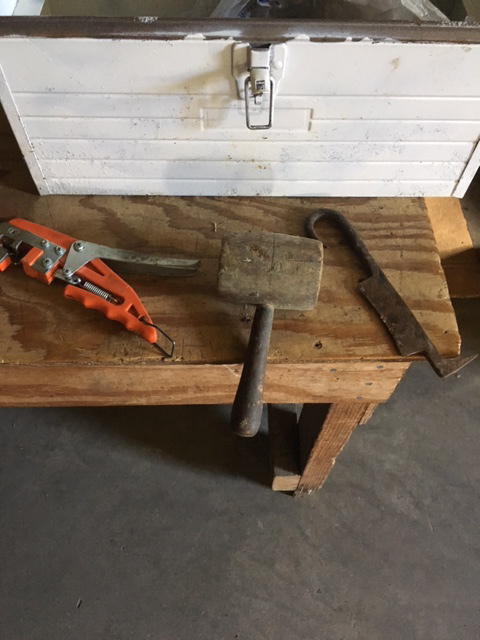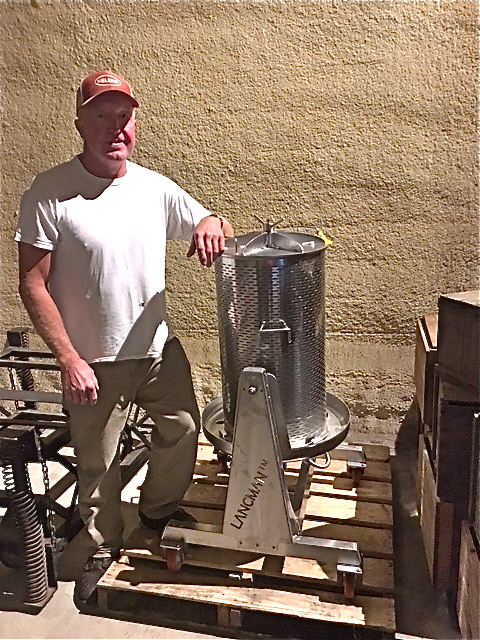The Way in the Orchards
Colin Scott has spent his life in orchards, learning how to tended them with his parents, Edward and Janice as role models. This episode is a testament of what it looks like to embody a craft as part of your way of life. Colin like many orchardist may not be a Mandalorian, a character from Star Wars who is now featured in a stand alone tv series depicting a a clan-based culture composed of members from multiple species and bound by a common creed, language and code, but he like many orchardist who grew up tending trees from an early age see orchard care as A Way of Life.
This episode first released in Season 2 of Cider Chat on episode 093 and was re-produced for Season 8. The info is evergreen and timely for those of us who love orchards and want to broaden our own knowledge base.
E.J. Scott Orchard was purchased in 1954. (Note that the first initial of Colin’s parents in the business name) Today Colin is running the orchard and the apple storage facility site which is discussed at the beginning of this episode. E & J Scott Orchard also has apricots, blackberries, blueberries, cherries, grapes, nectarines, peaches, pears, plums, quince, raspberries, & strawberries. Their main store is in Ashfield, MA and is open Sat & Sun 10-6 July through May. Organic duck eggs from their heritage breed Ancona ducks are also available upon request.

We begin this chat with Colin inside one of the Apple storage rooms.
What affects the ripening of apples?
- temperature
- ethylene gas – apples off gas
- Apples are placed in a CA room (Controlled Atmosphere) where both temperature, oxygen and the off gases are controlled.
If apples don’t have oxygen they don’t ripen. Colin and I discuss the “delicate” process of storing apples or what he called “putting them to sleep”.
Apple storage tip: Take your apples out of the refrigerator every once in a while and let them off gas. That will help them last a bit longer.

Next in this chat we talk about
- the beginnings of the orchard and what they grew and where they are going with the growing cider market
- Root Stock for grafting a tree – dwarf or standard
- Shifting his market to cider apples
- What do you look for in a root stock
“The idea behind grafting is to take the variety that you want and put it on the root stock you want. The vigor of the variety contributes to the size of the tree.”
The numbering system of the root stock defines the size of the tree or a percentage of the size of the tree
- M rootstock 9, 11, 18, 26 what does that stand for? If you put a Macintosh on standard tree rootstock and a Macintosh on a 26, you would get 30 -40-% of the standard one. A M118 or M111 are going to be 6–70% the size, which means they will be almost as big as a standard tree.
Today Colin is using Geneva root stock, because he is finding it resistant to Fire Blight. A nasty disease that can kill the tree.
Geneva root stock numbering system is random too. Colin is using Geneva 41 & 935. They will be 30-40% of the standard tree. He uses a bench graft on his root stock.
The secret to grafting per Colin
- Lining up the cambium layers
- Getting it airtight
We also chat pruning an apple tree, especially a tree that you are attempting to revive after years of neglect.
Contact E & J Scott Orchard
- email: mailto:cscott9487@gmail.com
- Facebook: https://www.facebook.com/E-J-Scott-Orchards-2017815285121065/
Mentions in this chat
- Fermentis – Yeast and Fermentation Solutions for Cidermakers
- Oesco, Inc – professional grade supplies for orchards and cidermakers.
- link to the bladder press sold by Oesco http://www.oescoinc.com/catalogsearch/result/?q=bladder+press
Help Support Cider Chat Please donate today. Help keep the chat thriving!
Find this episode and all episodes at the page for Cider Chat’s podcasts.
- Follow on Cider Chat’s blog, social media and podcast
- Twitter@ciderchat
- Instagram:@ciderchatciderville
- Cider Chat FaceBook Page
- Cider Chat YouTube
Haven’t downloaded this episode yet? Here it is again for your listening pleasure.




